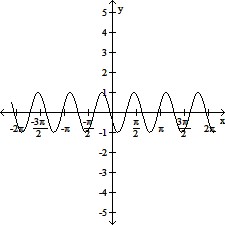Express as a single logarithm and, if possible, simplify. [ln (j2 - 36) - ln(j + 6)] + ln (j + y)
[ln (j2 - 36) - ln(j + 6)] + ln (j + y)
A. ln (j - 6)(j - y)
B. ln (j - 6)2/3(j - y)
C. ln (j + 6)2/3(j + y)
D. ln (j - 6)2/3(j + y)
Answer: D
You might also like to view...
Solve the variation problem.The weight of a liquid varies directly as its volume V. If the weight of the liquid in a cubical container  on a side is 250 grams, find the weight of the liquid in a cubical container 3 cm on a side.
on a side is 250 grams, find the weight of the liquid in a cubical container 3 cm on a side.
A. 27 grams B. 12 grams C. 6 grams D. 54 grams
Classify the function as a polynomial function, rational function, or root function, and then find the domain. Write the domain in interval notation.h(t) = 
A. rational function; (-?, 0) ? (0, ?) B. rational function; (-?, ?) C. rational function; (-?, -9) ? (-9, 0) ? (0, 9) ? (9, ?) D. rational function; (-?, 3) ? (3, ?)
Find the domain of the function.f(x) = ln(-1 - x)
A. (-?, 1) B. (-?, -1) C. (-1, ?) D. (1, ?)
Match the graph with the correct equation.
A. y = cos 3x cos (-2) - sin 3x sin (-2) B. y = sin 3x cos (-2) + cos 3x sin (-2) C. y = cos 3x cos (-2) + sin 3x sin (-2) D. y = sin 3x cos (-2) - cos 3x sin (-2)